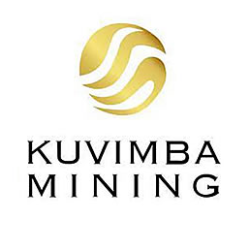KMH finalising talks for gold mine reboot
KUVIMBA Mining House (KMH) says discussions with various funders for the development of the US$150 million open pit project at Shamva Gold Mine will be concluded this year, paving the way for the project’s take-off.
KMH, which falls under Zimbabwe’s sovereign wealth fund, the Mutapa Investment Fund, has announced plans to reboot operations at Shamva through the Shamva Hill open-pit project.
Once secured, the required funding would also be channelled towards the construction of necessary infrastructure including processing facilities that will see Shamva processing gold directly at the mine.
So far, ore from Shamva is processed at KMH’s other subsidiary, Freda Rebecca Gold Mine in Bindura, situated about 30 kilometres from Shamva Gold Mine.
KMH acting group chief executive officer Engineer Trevor Barnard in an interview yesterday said: “We’ve got a number of different developers that are engaging with us at the moment to assist with the funding and the development of that project.
“And we are talking to them on an ongoing basis. We should be able to close out that transaction I would imagine in the next few months (before the end of the year) so that we will be able to decide which of the various funders and or developers that we will be partnering with to take that project forward.”
Pre-and bankable feasibility studies on the Shamva Hill open-pit project were completed last year.
“So, we are expecting to make an announcement around that project definitely before the end of the year.”
Shamva — one of Zimbabwe’s oldest gold mines is producing 45 000 tonnes of ore per month from underground operations, a trajectory last achieved in 1910.
The mine, which also forms part of KMH’s gold cluster together with two other active mines — Jena and Freda Rebecca, produced 3 240 kilogrammes of the yellow metal in the financial year ended March 31, 2024.
Freda contributed 70 percent while Shamva and Jena accounted for 20 percent and 10 percent respectively.
“Shamva is producing similar amounts or similar quantities that it produced in the past. In total, our production from the gold cluster is around 300 kg of gold a month.
“We’re definitely looking at developing our mines, specifically the project that we just spoke about (Shamva Hill open-pit project), so that we can increase our production significantly out of Shamva — so that the total production will be increased significantly.
“There are definitely prospects, especially with the current gold price that we’re sitting at,” he said.
Despite the geo-political issues the world was experiencing, which have seen commodity prices on the international market in recent years remaining depressed, the price of the bullion has been on a positive growth trajectory, rising from US$1 900 per ounce in September last year to US$2 500 presently.
Gold is the country’s single export earner generating around US$3 billion annually and by next year, the metal is expected to generate about US$4 billion.
The mining industry as a whole, is one of the major economic centrepieces, accounting for at least 75 percent of the national total exports.
In 2023, Zimbabwe produced 30,1 tonnes of gold and this year the Government targets 35 tonnes, a record high the country achieved in 2022.
The first eight months of this year saw gold deliveries reaching 20,7 tonnes compared to 19,3 tonnes in the corresponding period in 2023.











